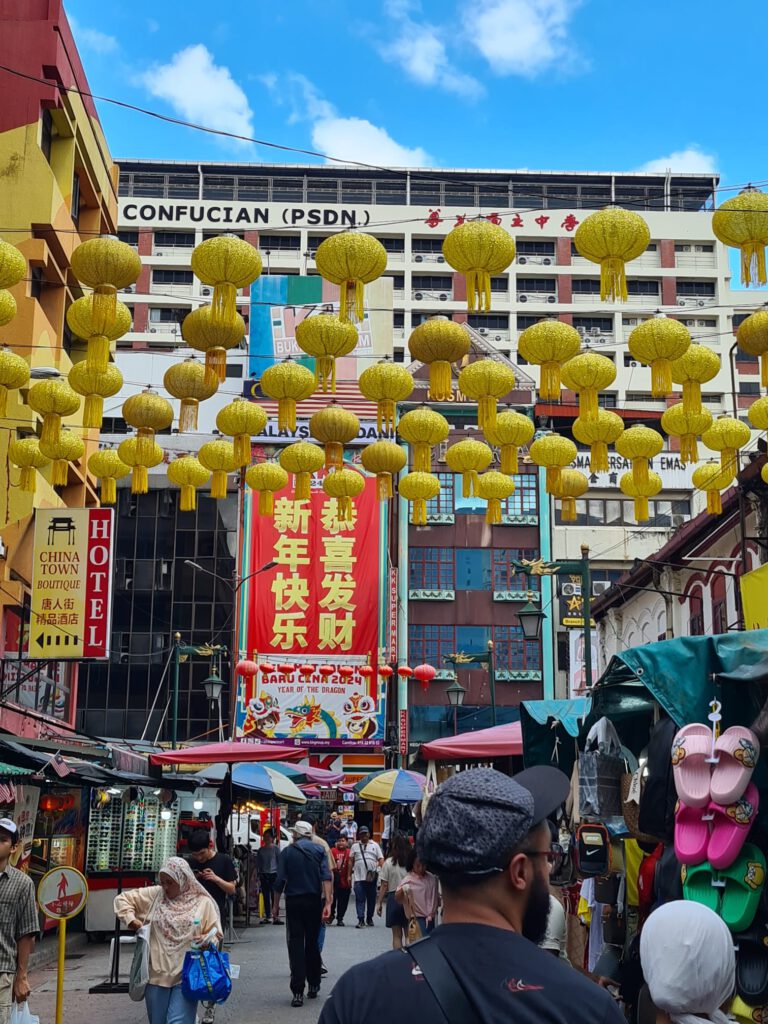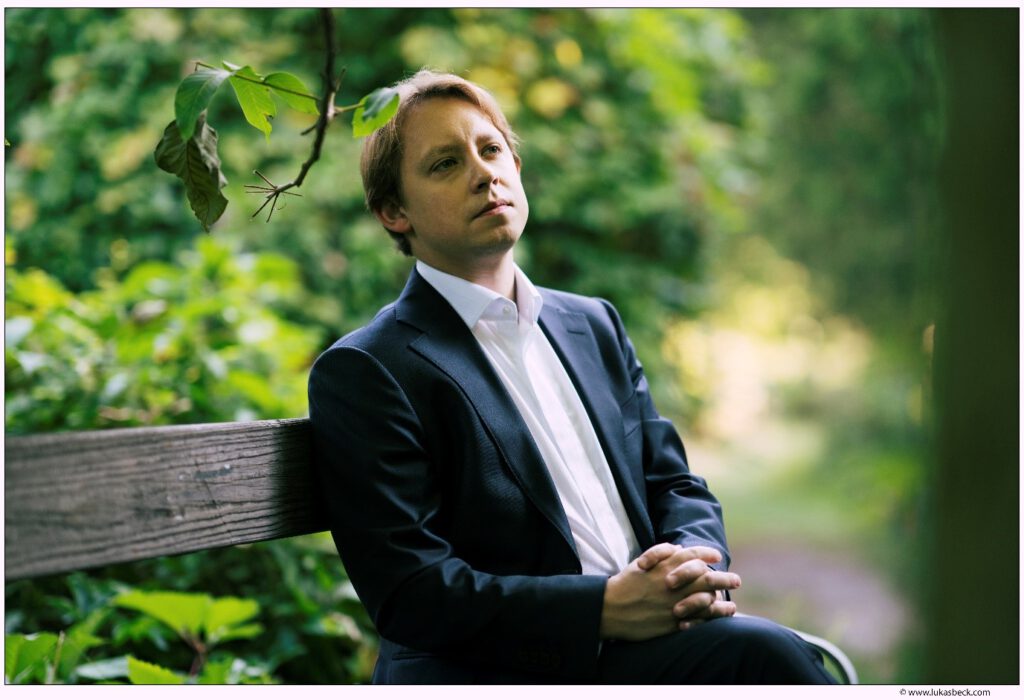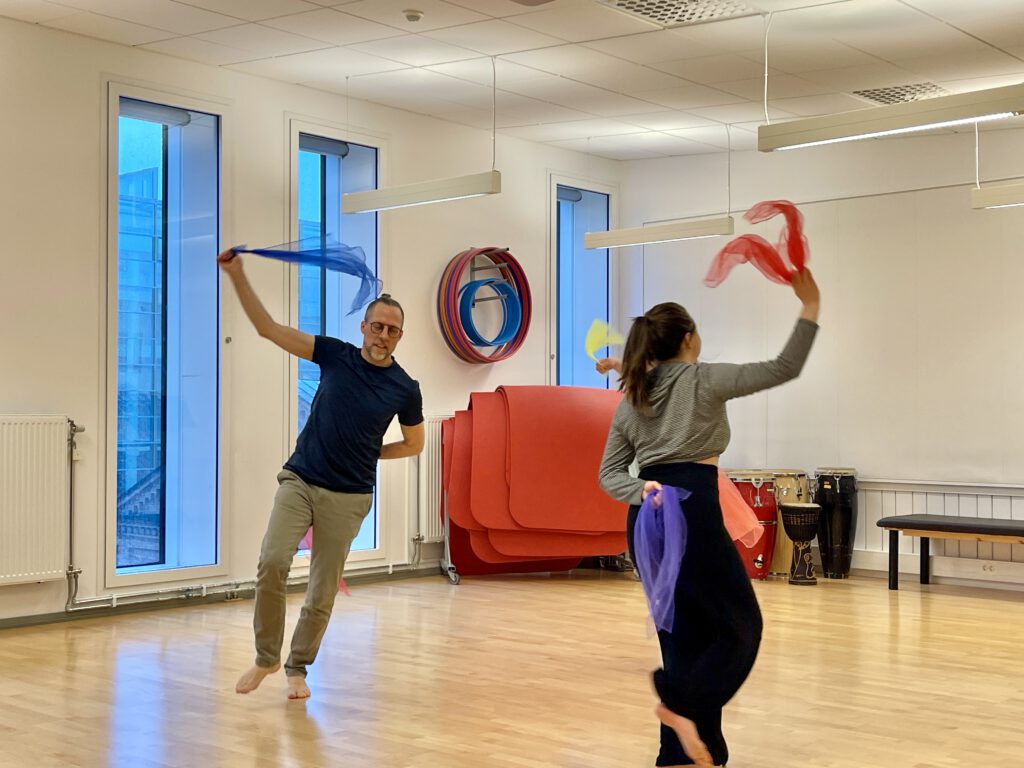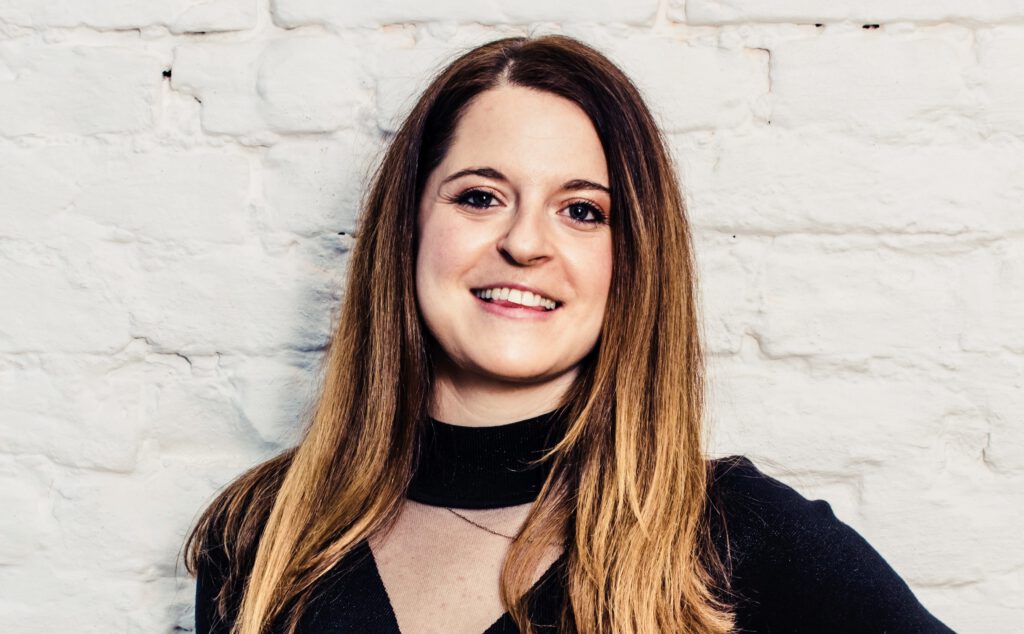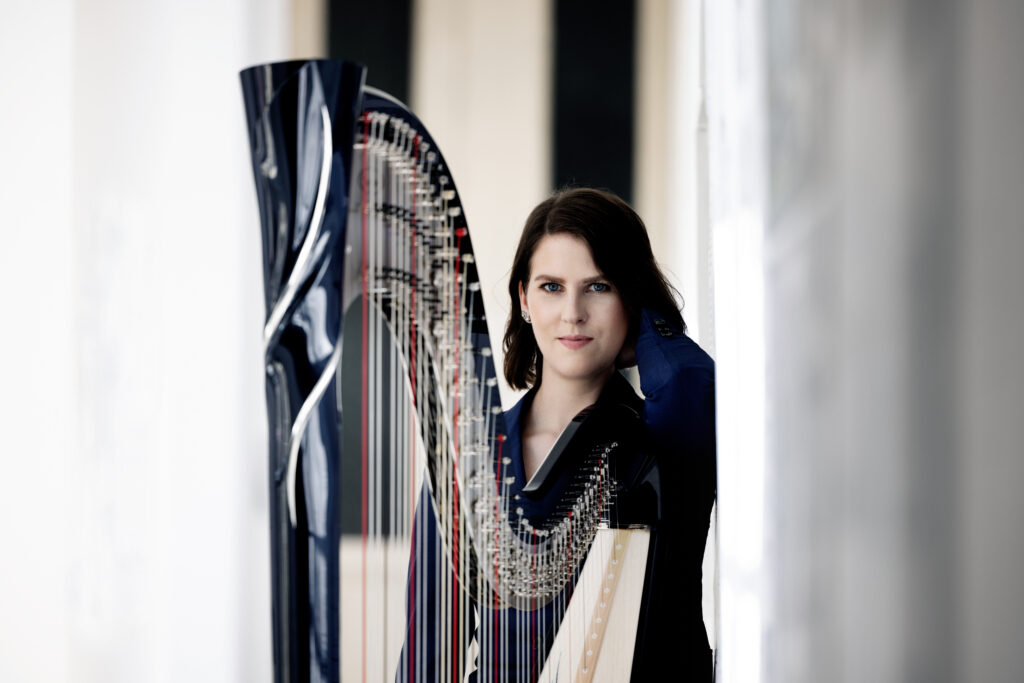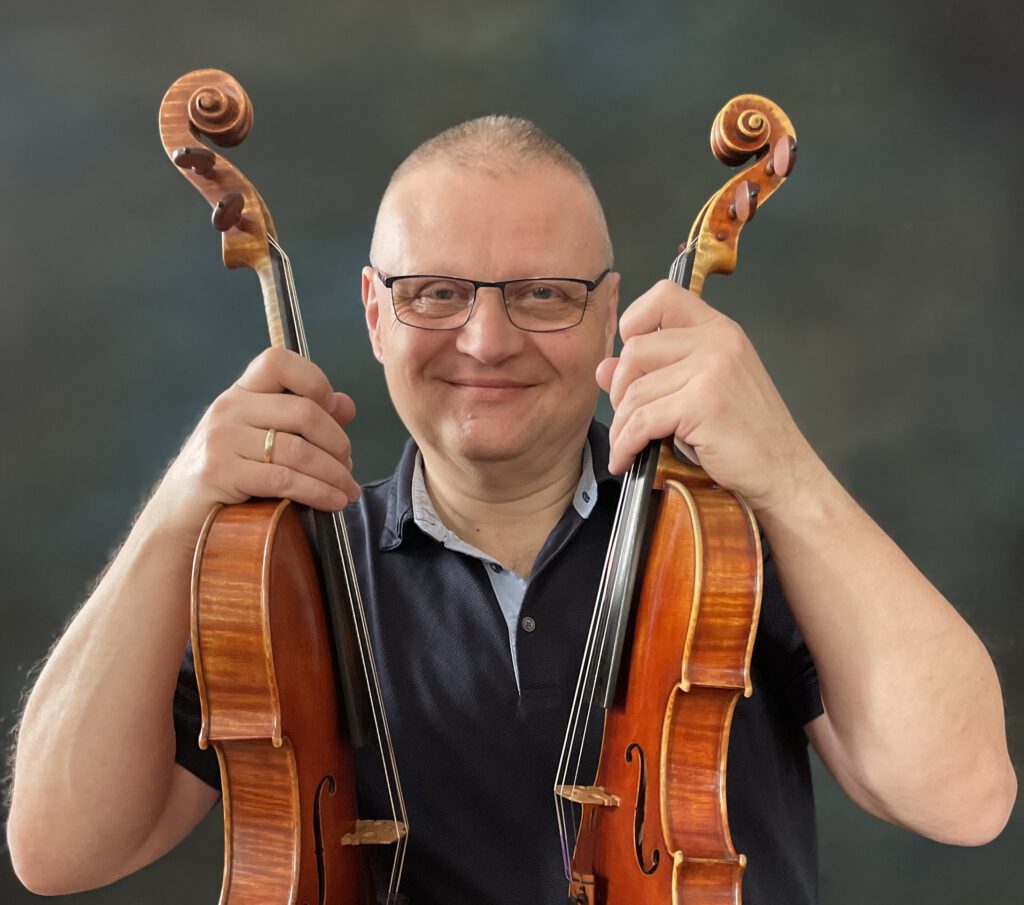At the Estonian Academy of Music and Theatre
Music and improvisation in Tallinn
In January 2020, I was able to spend six days in Tallin as part of the Modernizing European Higher Music Education through Improvisation project. I had the pleasure of being there as a student representative of the mdw – University of Music and Performing Arts Vienna along with the teachers Manon Winter and Burkhart Stangl. Despite the brevity of our stay, it was a unique and exciting experience to gain a different perspective of music-making in groups! I hope I can motivate the reader to attend the next conference or to undertake a journey to Estonia!
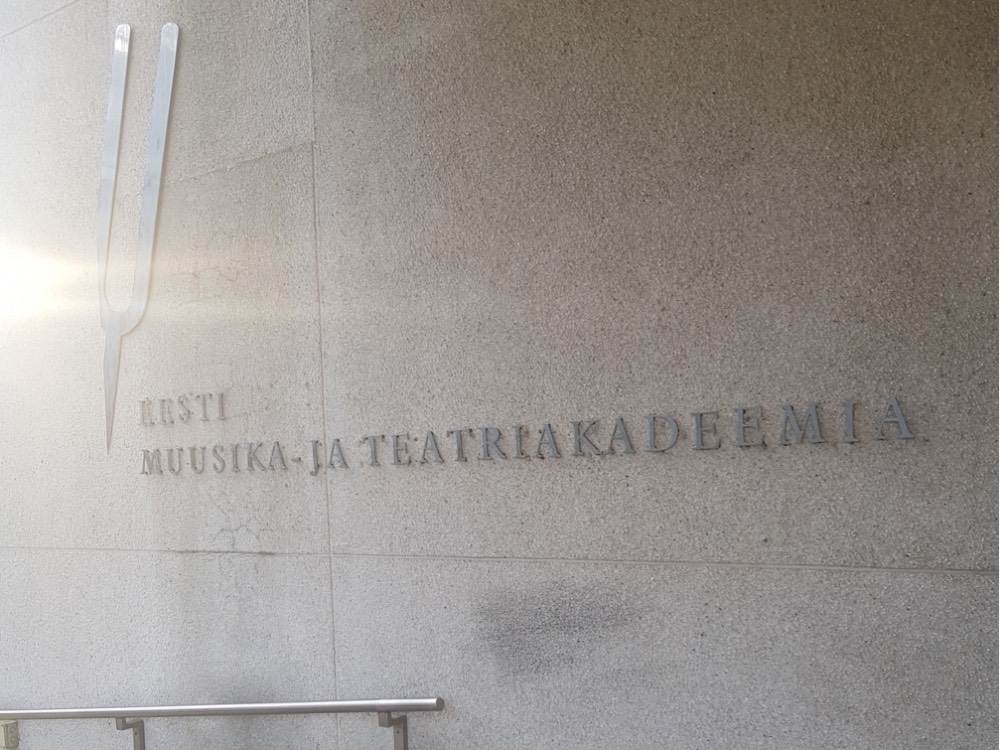
Travel and arrival in Tallinn
There are unfortunately no direct connections from Austria to Tallinn, so every flight makes a short stopover somewhere. I flew on LOT Polish Airlines, transferring in Warsaw and then flying on in a somewhat smaller plane to Tallinn. The entire flight, including the stopover, took about five hours. From Tallinn’s airport, which is quite small, I took a taxi into the city, which is only ten minutes away. Checking into my Airbnb was not a problem; my apartment was literally only a few seconds away from the university and I was able to see it from my balcony. The other students were staying in a hotel that was also very close to the conference venue. From there, it also takes only a few minutes to get into Tallin’s famous historic city centre.
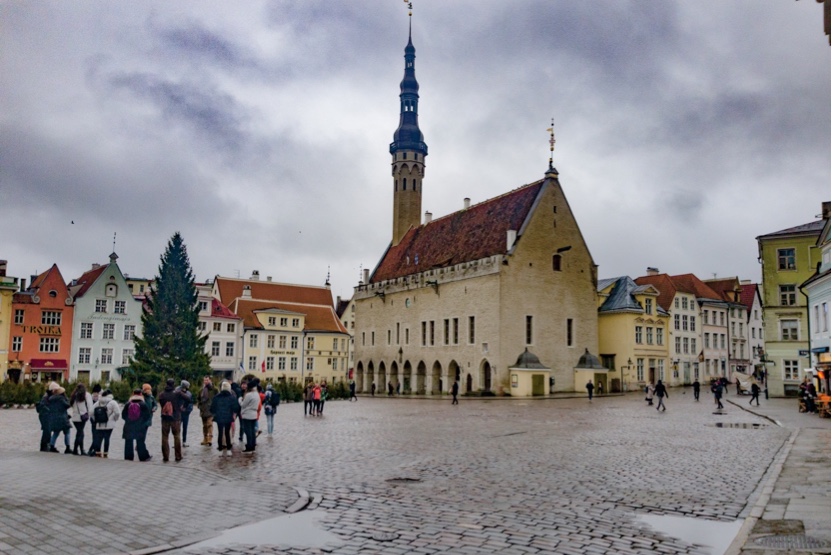
University
The university where the courses and masterclasses were held was the Estonian Academy of Music and Theatre, which offers a wide selection of instrumental curriculums, from classical music to jazz and especially contemporary music, dance, and improvisation.
What makes this university so special is that it offers New Music/Dance as main courses of study, and that one can graduate with a degree in these curriculums. As a comparison: In the mdw’s music pedagogy curriculum (IGP), this is offered as a specialisation and complemented through various courses that are offered occasionally.
The building is very modern and features two entrances: one that leads directly to the university’s huge concert hall, and one for the studies section. Unfortunately, I was not able to determine the exact number of practice rooms. But if one adds the free classrooms, it must be over a hundred. I also noticed that Estonia pianos are to be found everywhere. In some rooms, Bösendorfer, Steinway, and other piano brands can also be found. One could practise from 8 a.m. to 11 p.m., if one even had the time.
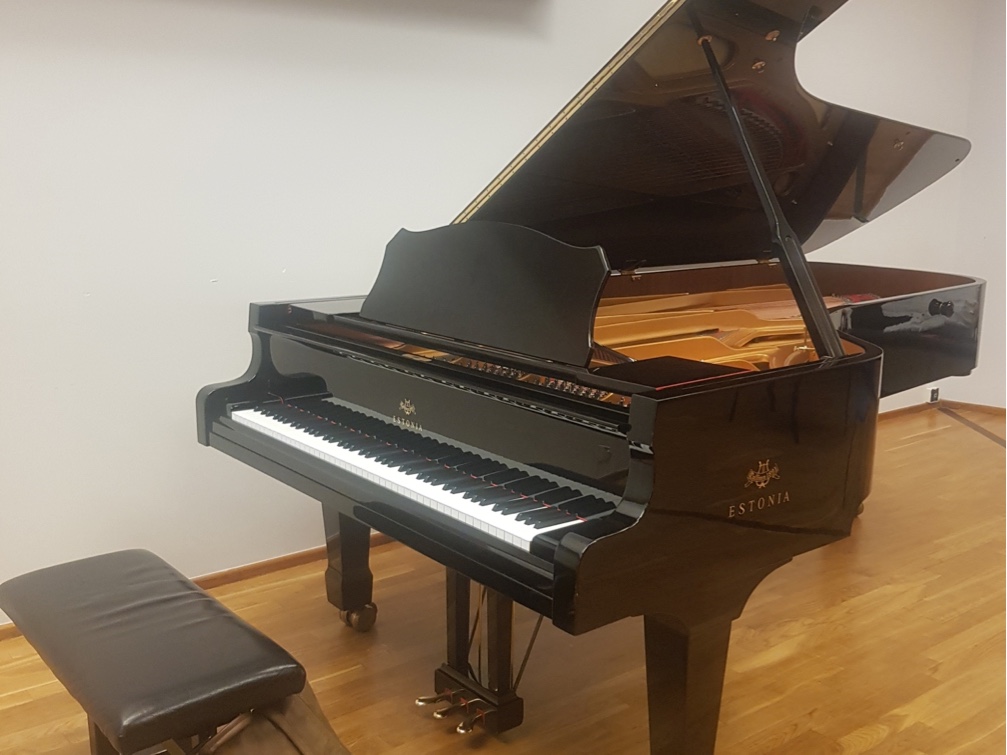
Courses and masterclasses
Except for orientation day, the days were divided into two parts: I spent the time from 9 a.m. to 12:30 p.m. largely in the same room with a selected group of fellow students, which remained constant during the entire week. Beginning at 2 p.m., either just before or just after lunch, students have to register for a masterclass with professors. These masterclasses last for four hours with a break, although one can attend two classes for two hours each. The individual professors were from other countries (although they were all Scandinavian countries, with the exception of England), and they taught their improvisation concepts in their own way. Within the morning session, the teachers rotated. Our group also included contemporary dancers, whom their teacher referred to as “movers”.
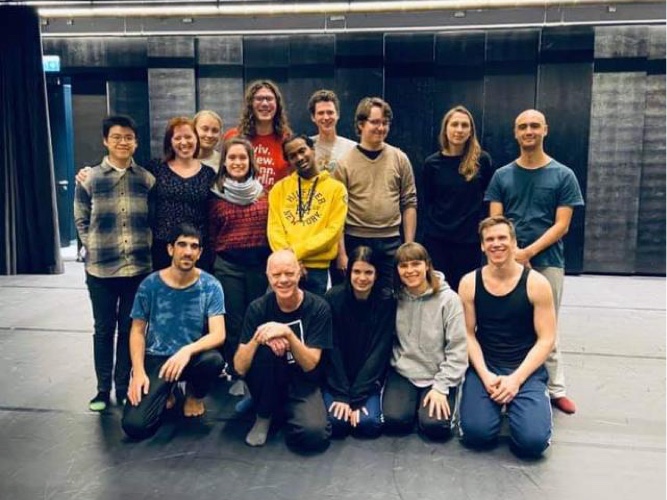
Experiences and tasks
The first task, of course, was to get to know the group, which was made up of various musicians playing various instruments. There was trombone, trumpet, four cellos, voice, violin, electric guitar, piano, and much more, which of course resulted in an interesting constellation. Great emphasis was placed on the warmup exercises, which ranged from simple balance exercises to exercises aimed at training body perception (lying flat and observing one’s own breathing, then slowly beginning with small movements that lead to large ones and then to standing up). It is unfortunately impossible for me to describe all the warmup exercises, as there were so many presented by so many different teachers.
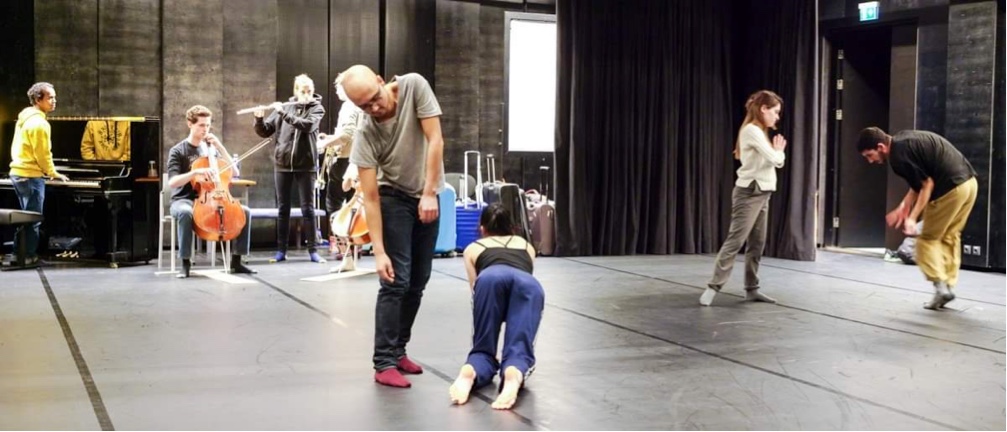
The exercises taught by Arne stood out in particular for me. He combined vocal exercises with body exercises, for example having us stand facing each other in pairs and clapping in time with each other, whereby one could also clap with different stresses and vary the simple quarter-note rhythm.
In improvisation, we started to get to know each other in trios or quartets. The dancers were also involved: the dance professors gave them their own tasks, of which the musicians – interestingly – were sometimes unaware. But there were also clear instructions as to which musician the dancers were to move (while the entire ensemble played, of course!), or assignments such as “Only play when the dancers move”, or “Play the opposite of what they are doing”. Which means playing slow movements quicky and the reverse! In this way, we worked our way towards becoming a large group that could – and did! – improvise together. This was followed by improvisation assignments that one had to play within a certain time span. This is very difficult without a watch! Or one had to remember individual motifs or ideas and then develop them in a tonal as well as an atonal framework.
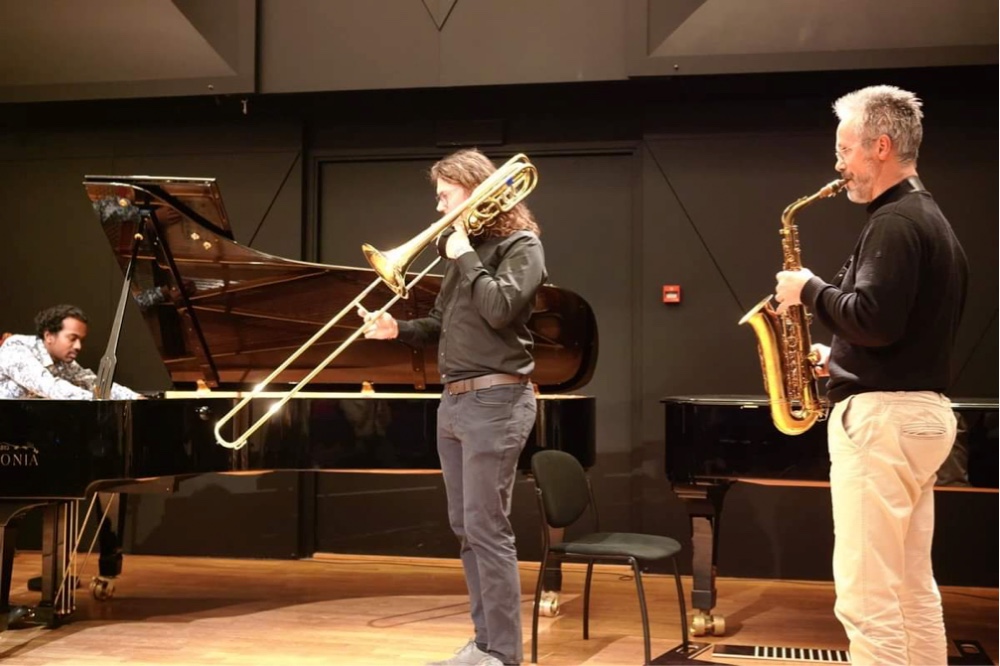
In the masterclasses, which were naturally smaller in terms of participants, the improvisation was largely limited to playing on one’s instrument. In this regard, there was also a great variety of assignments. Very special and challenging for me was improvising in classical styles in the form of “call and response”. This is done in pairs: one player begins with a simple theme that must begin on the tonic and end on the dominant. At the very end, the other player then responds to this with his or her own theme, matching the initial theme in terms of number of bars and duration. This back-and-forth continues for a while until the players transition to improvising simultaneously and then recognising, based on the playing, when the piece is over.
This was one of the many assignments I was given in the many courses I was able to attend, but there were countless others, such as imitating other instruments and other improvisations with one’s own instrument, standing in a circle and playing in turn: single notes, solos, etc. of the same duration. It was in any event quite varied and challenging!
One also had the option of participating in the concerts held every other evening. I did this once: nothing was arranged in advanced; one simply began improvising together! But frequently I was unfortunately too tired for this, or preferred to catch up on playing classical piano in a practice room.
Meals in Tallinn
We had vouchers for lunch that we could use in the dining hall. On the first and last day, there was a buffet lunch and in the evening an opening celebration at the beginning and a closing ceremony at the end with an unlimited supply of wine. Around the old city centre there are supermarkets that are open on Sundays and smaller food shops that are even open around the clock. The old town features very traditional as well as quite fancy restaurants (including one that serves everything, even meat dishes, wrapped in a pancake!), but they are somewhat more expensive. Outside of the city centre, there are also areas that have very inexpensive restaurants geared towards students. The local Estonian beer is very tasty, and the Estonians spend a great deal of time inside during the winter months, as there are very few hours of sunlight during the day. Occasionally, one can find bars or pubs that are open during the week until 2 a.m. and sometimes the entire night until 5 a.m.
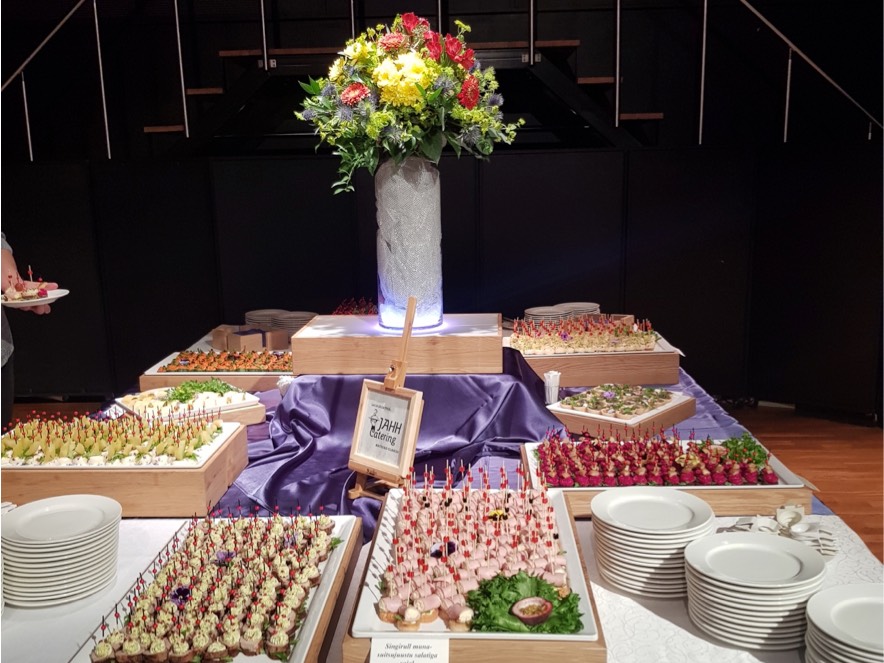
Sights
Because the classes were very long and intense, it was not until the final day that I had time to explore the old town by day. Worth seeing are the many churches and the old Swedish-style buildings. Outstanding sights, of course, include Toompea Castle and the large orthodox church.
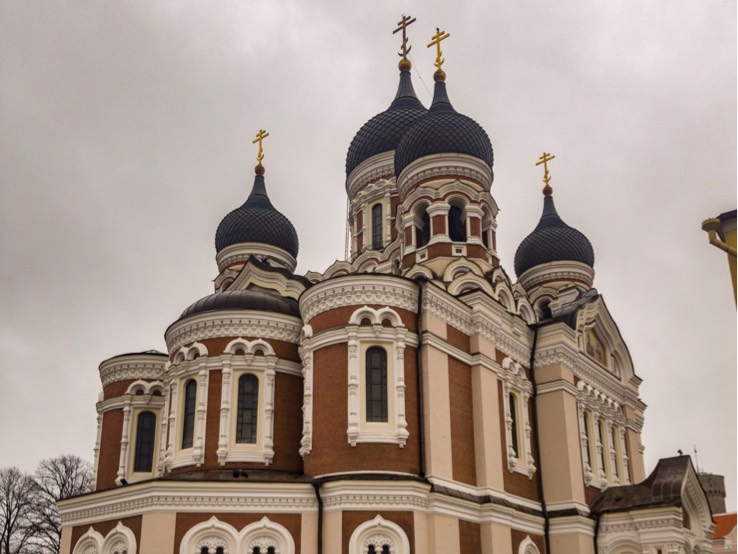
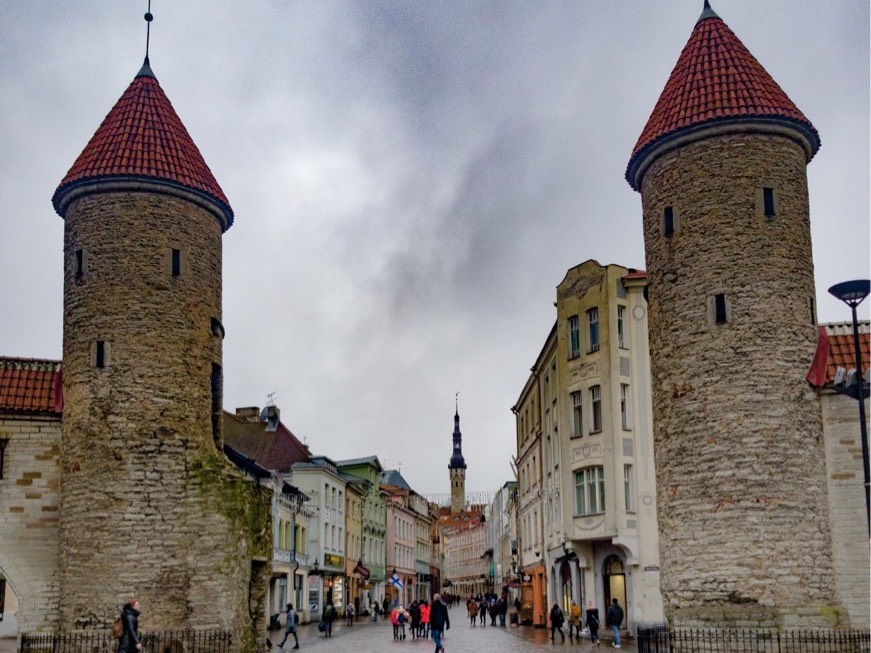
Summary
Overall, I was very happy with this week and this course. This experience provided me with very interesting insights into a wide variety of improvisation concepts and above all trained my communication with other musicians and my listening skills. I think that every classically trained musician should at least once explore with this intensity the communication between musicians and dancers. Of course, I also got to know new musicians every day, people who I can count as my friends! My thanks go to the mdw’s Ludwig van Beethoven DepartmentandtoManon Winter, who invited me to attend this course! I hope that my essay was a source of enrichment for you! Thanks also go to Rasmus Kooskora from the Estonian Academy of Music and Theatre for the photographs that were taken during the classes.
Are you a mdw student and interested in spending a semester or year at one of our partner institutions?


